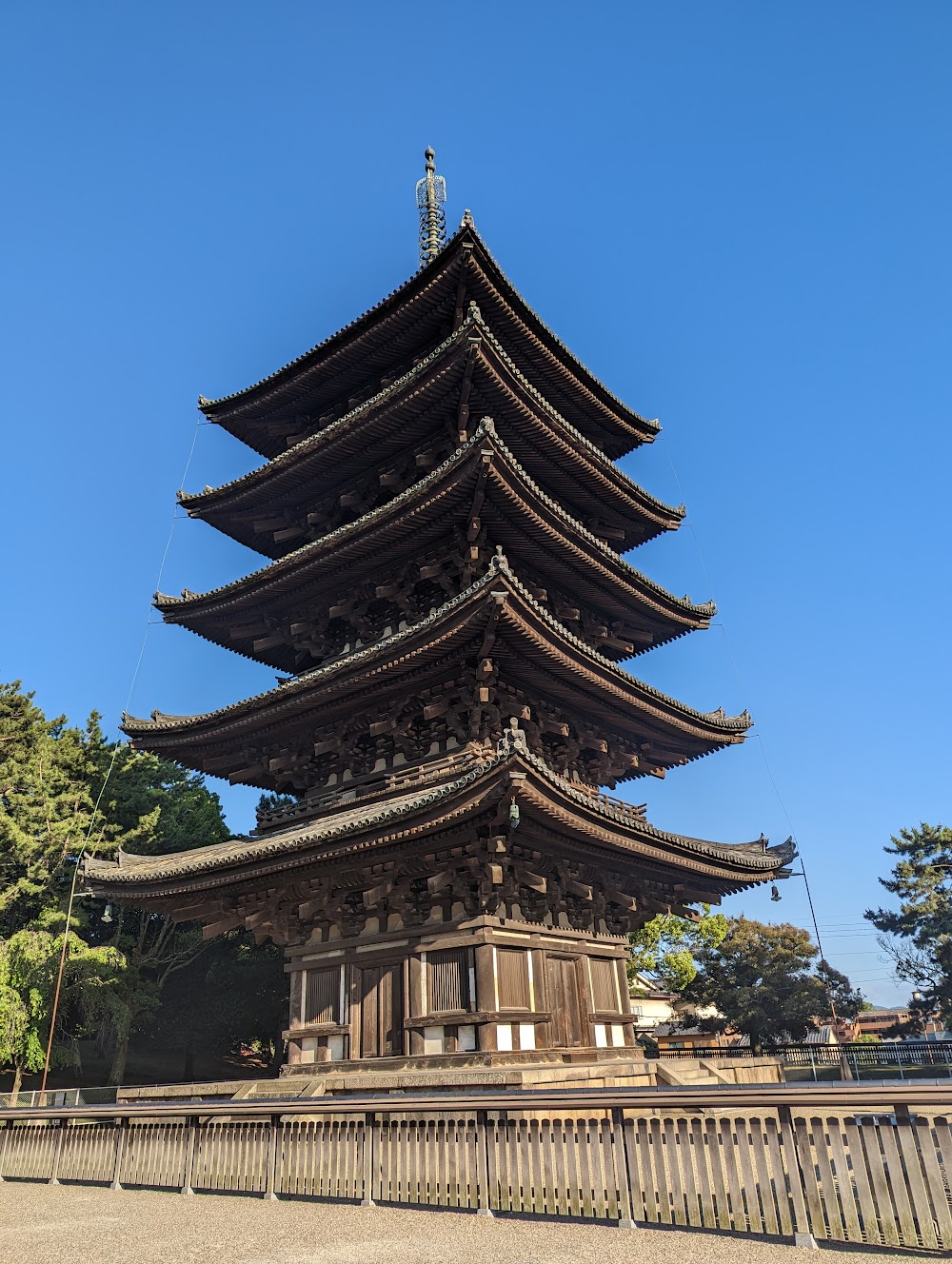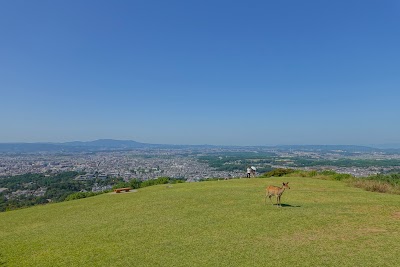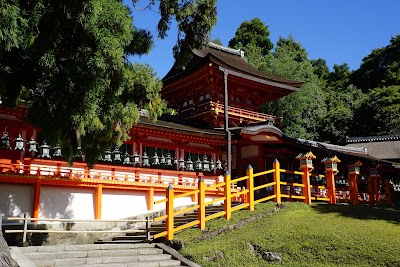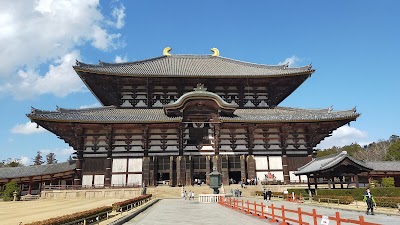Kofuku-ji Temple (興福寺)
Overview
Kofuku-ji, a revered Buddhist temple, is nestled in the historic city of Nara in Nara Prefecture, Japan. This temple complex boasts a rich history that dates back to 669, when it was founded by Kagami-no-Ōkimi, the wife of Fujiwara no Kamatari. She established Kofuku-ji to pray for her husband's recovery from illness. Originally located in Yamashina, Kyoto Prefecture, the temple was relocated to its present site in Nara in 710, coinciding with the establishment of Heijō-kyō as the capital of Japan.
The Fujiwara clan, one of Japan's most influential families, was instrumental in the growth and prosperity of Kofuku-ji. Over the centuries, the temple underwent numerous reconstructions and expansions, mirroring the political and cultural zenith of the clan. At its peak, Kofuku-ji was a sprawling complex featuring numerous halls, pagodas, and subsidiary structures dedicated to various deities and bodhisattvas.
Among the most iconic structures in the Kofuku-ji complex is the Five-Story Pagoda. Standing at an impressive height of 50 meters, it is the second tallest wooden pagoda in Japan. Originally constructed in 730 by Emperor Shōmu, the pagoda has been rebuilt several times due to damage from wars and fires, with the current structure dating back to 1426. The pagoda serves as a symbol of Nara and showcases the architectural brilliance of ancient Japanese craftsmen.
Another significant edifice within the complex is the Three-Story Pagoda. Although smaller than its five-story counterpart, it remains equally important. Built in 1143, this pagoda exemplifies the harmonious beauty and intricate artistry characteristic of pagoda architecture.
The Central Golden Hall (Chū-kondō) is a central feature of Kofuku-ji, housing a revered statue of the Yakushi Nyorai, the Buddha of Healing. The original hall was constructed in 710, but like many other structures in the complex, it has faced destruction and subsequent reconstruction over the centuries. The most recent version of the Central Golden Hall was completed in 2018, a meticulous effort to restore it to its original splendor.
Kofuku-ji also boasts the Eastern Golden Hall (Tō-kondō), which enshrines a stunning and valuable statue of the Miroku Bosatsu (Maitreya Buddha). Originally built in 726, this hall has undergone multiple reconstructions, with the current structure dating back to the Kamakura period and recognized as an Important Cultural Property in Japan.
The Northern and Southern Round Halls (Hokuendō and Nan'endō) are remarkable for their unique octagonal designs. The Southern Round Hall, constructed in 813 by Fujiwara no Fuyutsugu, is one of the thirty-three temples in the Saigoku Kannon Pilgrimage. Meanwhile, the Northern Round Hall, built in 721, enshrines a statue of the Bodhisattva Fukūkensaku Kannon and is celebrated for its architectural and artistic significance.
For those interested in Buddhist art, Kofuku-ji's Treasure Hall (Kokuhokan) is a must-visit. This museum houses an extraordinary collection of Buddhist artifacts, including sculptures, paintings, and ceremonial objects. These treasures offer invaluable insights into the religious, cultural, and artistic heritage of Nara's early Buddhist history. Among the highlights are ancient wooden statues from the Asuka and Nara periods, regarded as masterpieces of Japanese Buddhist sculpture.
Throughout its long history, Kofuku-ji has faced numerous challenges, including civil wars, political upheavals, and natural disasters. Yet, it has remained a vital site for Japanese Buddhism, continuing to draw visitors from around the globe.
Today, Kofuku-ji stands not only as a testament to the architectural and artistic achievements of ancient Japan but also as a living symbol of the enduring spiritual and cultural legacy of the Fujiwara clan and Japanese Buddhism. The serene beauty and profound historical significance of Kofuku-ji make it an essential destination for anyone interested in the rich tapestry of Japan's historical and religious development.









